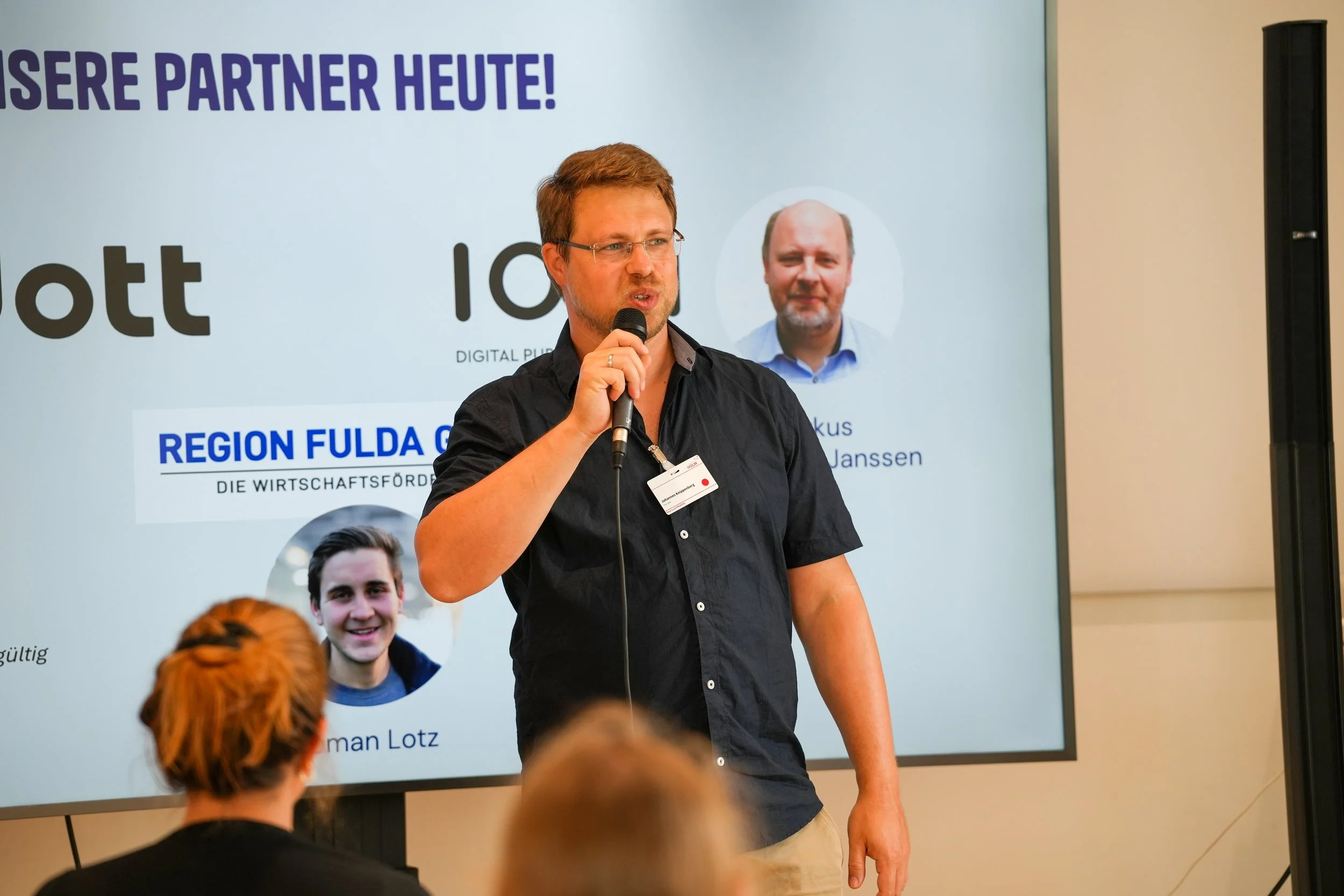Next Level Mobility: Tackling Corporate Mobility Challenges at 40°C
On what turned out to be the hottest day of the year in Frankfurt, we turned up the energy indoors at our interactive conference “Next Level Mobility – Corporate Mobility Management,” co-hosted by the Young Mobility Network (YMN) and HOLM GmbH.
Despite the heat, more than 60 mobility changemakers came together with one goal: to tackle real-world challenges of corporate mobility — and to take solutions to the next level.
Setting the Stage: Corporate Mobility in Transition
The day began with a strong panel featuring Stella Reulecke (Lane Change) and Christine Breser (ivm GmbH), moderated by Anna Filby. The discussion focused on strategies companies can actually apply: from car sharing and mobility hubs to the implementation of mobility budgets.
The panel highlighted a core truth: companies hold enormous potential to influence commuting patterns, both through incentives and infrastructure. As one participant put it:
“Traffic is part of the problem of why it keeps getting hotter. That’s why I wanted to be here today — to actively work with you on finding solutions.”
During the panel, we explored three key approaches to corporate mobility, each offering unique opportunities for companies to optimise commuting and transportation strategies.
-
First, we looked at inter-company collaboration. In business parks, for example, pooling resources around commuting can create real efficiencies. Ride-sharing initiatives often require a critical mass to become effective and many employees worry about reliability. By joining forces with neighboring companies, organizations can overcome these hurdles, foster broader cooperation among employees and reduce commuting costs. The key here is open communication with nearby firms and access to the necessary resources to implement such projects successfully.
-
Next, we examined what individual companies can do. Here, the focus is on leveraging available data to understand commuting patterns. While fleet costs are usually well-documented, insight into how employees travel to work and why is often missing. Conducting employee surveys can fill this gap, providing a foundation for targeted measures aligned with a company’s vision. For example, if the goal is to offer employees greater flexibility while supporting them financially, a mobility budget might be an effective solution. This benefit provides employees with a monthly allowance to partially or fully cover their preferred mode of transport, tailored to their needs.
-
Finally, we discussed the personal level. Any mobility initiative will only succeed if employees actually adopt and embrace it. Understanding the real values, preferences, and requirements of your workforce is therefore essential. Only by putting the employee experience at the center can mobility strategies achieve their intended impact.
By approaching corporate mobility from these three perspectives: inter-company collaboration, internal company strategies, and employee-centered initiatives companies can unlock efficiency, sustainability, and engagement across their organization.
From Theory to Practice: Workshops that Deliver
One special highlight was the real-world case study presented by the Wirtschaftsförderung Fulda on the Technologiepark Fulda-West. With commuting and accessibility challenges front and center, the stage was perfectly set for collaborative problem-solving.
Participants then split into two hands-on workshops, diving into practical solutions around:
On-demand services
Carpooling and ride-sharing
Mobility hubs
Micromobility integration
Behavioural change strategies
Here, generalists and specialists sat at the same tables — an unusual mix that sparked fresh ideas. As one attendee, Walter Hirsch, reflected:
“Sustainable commuting is very important to me, which is why the variety of solutions from different experts was so valuable — from carpooling and employer benefits to micromobility. Too often, companies overlook how much more they could actually do.
When job hunting, I always tried to choose employers reachable by public transport. Larger companies have even more opportunities to actively improve accessibility — and municipalities should also make sure business areas are not just car-dependent. It’s still a challenge, but hopefully new mobility concepts will change that.”
For the Wirtschaftsförderung Fulda, the exchange also provided direct value:
“The event at HOLM was a great benefit for us. Through the intensive exchange with experts in the workshops, we gained valuable insights that now enable us to take a more focused approach to developing a viable mobility concept for the Industriepark West.”
Wrapping Up: Cookies, Connections & New Beginnings
No YMN event is complete without community. After an intense day of panels and workshops, we rounded things off with a summer party — complete with YMN-branded cookies (thanks to Linda Adams 🍪). The relaxed setting gave participants a chance to continue exchanging ideas, challenges, and solutions.
And there was even more to celebrate: the launch of the Young Mobility Network Hub Bremen, led by Sebastian Pofahl and Stell Reulecke. Planning for the first Stammtisch is already underway, with interest in Bremen growing fast.
A successful workshop day comes to a close — with many experts leaving not only with fresh insights, but also with valuable new contacts.
Looking Ahead
The Next Level Mobility Conference proved one thing above all: real innovation happens when we bring people together across sectors and disciplines. With heat outside and energy inside, participants left inspired and equipped to drive change — proving once again that mobility needs less theory, and more hands-on collaboration.
And yes: 40°C in Frankfurt, but we made it happen!







